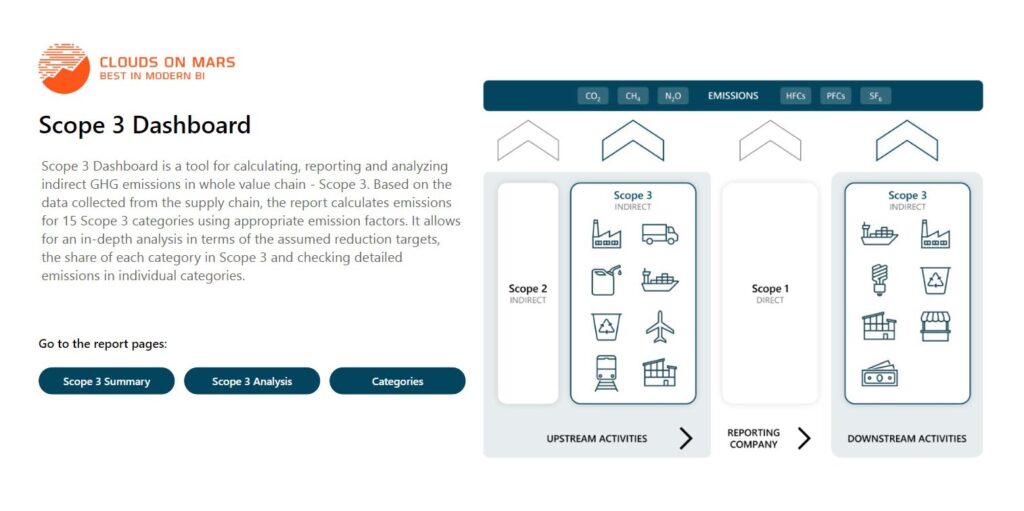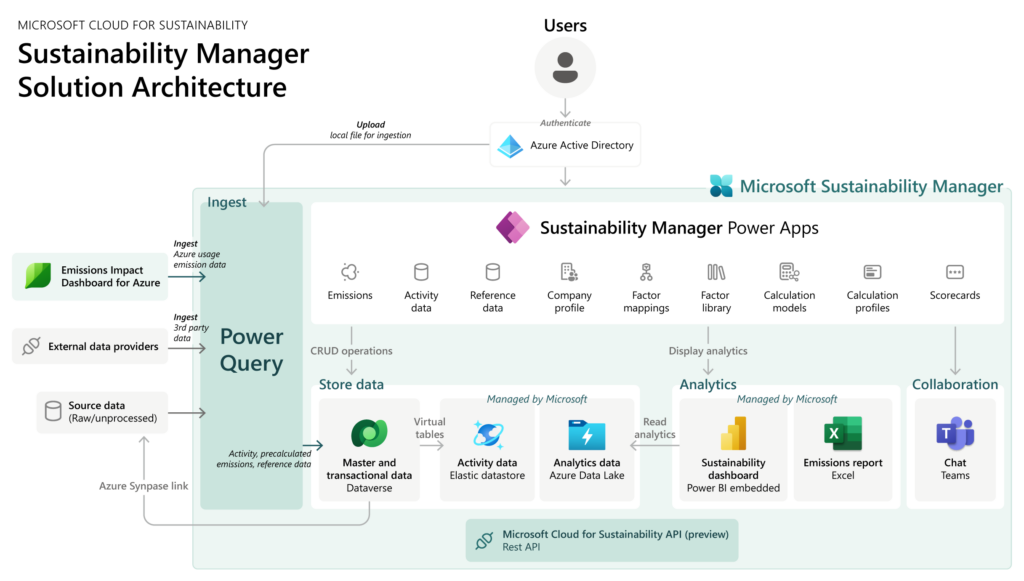
by the ESG Team
In today’s corporate landscape, greening, decarbonization, and reducing carbon footprints have become pervasive discussion topics. Many companies have taken steps to implement procedures aimed at cutting emissions within their operations. However, a significant potential for carbon reduction still needs to be explored within Scope 3 emissions. As a result, it is crucial to understand how to measure and manage these emissions effectively. The primary challenge is collecting emissions data throughout the procurement and raw material sourcing processes. This article delves into the critical importance of greenhouse gas (GHG) and Scope 3 accounting, highlighting its far-reaching benefits and implications for businesses and the environment.
What is GHG?
Firstly it should be defined what is greenhouse gas effect and what is the result of it. The greenhouse effect on it entirely it is a natural process as a part of our atmosphere’s makeup. It helps to stabilize the Earth’s atmosphere, and without that process, Earth’s surface would be some 33 °C cooler with no chance for life as we currently know. Additionally, many more indicators implicate temporary average temperatures on our planet, like solar radiation and the El Nino weather phenomenon.
But in the last two centuries – starting from the industrial age there has been a massive increase in greenhouse gases in the Earth’s atmosphere caused by the development of wide industry branches and especially connected with energy production mainly based on hard and lignite coal. As a result, the planet is at the stage where the so-called planetary boundaries are crossed, and the environment may not be able to self-regulate anymore.
Organizational vs. product carbon footprint
Regarding carbon footprint, two key terms come into play: “organizational carbon footprint” and “product carbon footprint. Quite often, there is confusion about both terms. However, there is a clear distinction between the two”.
Organizational Carbon Footprint
Organizational Carbon Footprint refers to the total amount of GHG emissions, typically expressed in carbon dioxide equivalent (CO2e), that are directly or indirectly produced by: an individual, organization, event, or entity. It encompasses all emissions from various activities, including energy use, transportation, waste generation, etc. The carbon footprint comprehensively assesses the overall environmental impact of an entity or its operations.
Product Carbon Footprint
Product Carbon Footprint focuses on the GHG emissions associated with the lifecycle of a particular product. It includes all emissions from the extraction of raw materials, manufacturing processes, transportation, use, and disposal of the product. It helps identify and understand the emissions intensity of specific goods or services, enabling consumers and companies to make more informed choices based on environmental considerations.
While the product’s carbon footprint encompasses all emissions associated with a product, the organizational carbon footprint focuses specifically on emissions tied to a single organization. Both concepts play a valuable role in assessing and managing the environmental impact of human activities and guiding efforts to reduce GHG emissions and combat climate change. However, the organizational carbon footprint is appropriate in a corporate context.
What are the scope 1,2 and 3 GHG emissions?
Scope 1, Scope 2, and Scope 3 greenhouse gas (GHG) emissions play distinct roles in measuring corporate carbon footprint, as defined by GHG Protocol. Developed collaboratively by the World Resources Institute (WRI) and the World Business Council for Sustainable Development (WBCSD), the GHG Protocol provides a standardized framework for organizations to account for and manage their emissions.
Here are the key definitions and characteristics of each scope:
- Scope 1 Emissions: encompass direct GHG emissions originating from sources owned or controlled by the organization. Examples include emissions from on-site fuel combustion, manufacturing processes, or vehicle fleets directly managed by the organization.
- Scope 2 Emissions: represent indirect GHG emissions associated with generating purchased electricity, heat, or steam the organization consumes. These emissions result from energy sources external to the organization but used in its operations.
- Scope 3 Emissions: cover indirect GHG emissions outside the organization’s direct operational control but are associated with its value chain. It includes emissions from activities such as transportation, procurement, waste disposal, and the extraction of raw materials.
Scope 3 emissions provide a comprehensive view of an organization’s environmental impact as they account for indirect impacts throughout the entire value chain. Scope 3 emissions capture various environmental considerations, from sourcing materials to product use and end-of-life disposal.
The significance of Scope 3 emissions lies in their magnitude. Research indicates that Scope 3 emissions typically comprise a substantial portion of a company’s total carbon footprint, ranging from 75% to 90%. Understanding and addressing Scope 3 emissions is crucial for organizations aiming to achieve environmental sustainability goals and mitigate their contribution to climate change. By comprehensively accounting for and managing emissions across all scopes, companies can make informed decisions to reduce their carbon footprint and contribute to a more environmentally conscious future.
What are the mandatory GHG regulations?
Scope 3 emission also attracts the interest of regulators in different parts of the world. In Europe Union, the CSRD (Corporate Sustainability Reporting Directive) introduces mandatory disclosure of Scope 3 emissions. In 2025, the obligation will initially cover the largest companies and be gradually introduced to other entities. In the United States, a proposal of SEC Climate Disclosure requires publicly traded companies to report on Scope 3 emissions. With the rules likely to commence in late 2023 or 2024, companies only have a little time to prepare themselves.
Why carbon footprint is essential for companies?
The significance of carbon footprint for companies cannot be overstated. Here are several compelling reasons why it is essential:
- Compliance with Regulations: With new EU and US regulations, many companies must report their Scope 3 emissions. It is crucial to determine whether an organization falls under this requirement and take the necessary steps to ensure compliance.
- Meeting with Stakeholder Expectations: Investors, customers, contractors, and employees increasingly expect companies to demonstrate efforts in reducing Scope 3 emissions. By actively limiting emissions in Scope 3, an organization can positively influence its image and reputation among stakeholders.
- Access to Capital: Monitoring and reducing emissions can open doors to favorable interest rates on investment loans through “green” financial products. Aligning with sustainable practices and demonstrating a commitment to lowering the organization’s carbon footprint can access capital.
Driving Innovation and Competitiveness: Embracing a creative approach to emission reduction can foster the development of new technologies, products, and services.
- By proactively addressing its carbon footprint, an organization can gain a competitive edge in the market while improving overall operational efficiency.
By recognizing the importance of carbon footprint and actively working towards emission reduction, companies can align themselves with regulatory requirements, meet stakeholder expectations, access favourable financing options, and drive innovation to thrive in a sustainable future.
What are the tools to collect and report the GHG data?
The main problem at the moment is that data is not just dispersed; mainly, there is no data or data provided on the invoices that are entirely inconsistent. No data equals the risk of noncompliance or, worse, the lack of access to financial instruments. An integrated IT solutions and products ecosystem could support organizations throughout the ESG data management lifecycle. Starting from collection through digitized and artificial intelligence-supported solutions with Power App, then connected via IoT with cloud storage and automatically transferred to the appropriate ESG tool with the implemented GHG analysis methodology, and ending with advanced analytical and reporting devices, such as Power BI. The good news is that modern IT tools allow you to collect hard-to-reach data, such as greenhouse gas emissions from Scope 3, and manage them effectively. Access to such critical information will enable you to use the analytical tools available in Power BI. Therefore, access to modern tools such as IoT, AI, and Power BI allows you to create a good report based on reliable data, plan an ESG strategy and be a sustainable development leader.

How to start GHG data collection?
The fundamental foundations to start the successful monitoring and measuring of the climate change factors at your organization are reliable and trustful data. There will only be proper AI predictions and stable policies, targets, and mitigation plans with a solid system that integrates the data sources from the strategic, financial, and operational supplemented by the data from the supply chains. A system that digitizes data on-site and then brings it together in one place could be the first step around a situation where data can be identified. It can also be treated as raw DWH – Data Warehouse. Simultaneously the main market pain point is that the new regulation induces demand in GHG scope 3 data. Obtaining GHG data linked to purchasing goods and services is challenging for every company. With international GHG data collection and exchange systems, companies can use efficient and robust tools to identify GHG mission hot spots along their supply chains. In this regard, there is a growing interest in scientific methods such as life cycle assessment (LCA) and environmentally extended input-output (EEIO) models.
Tailor-made EEIO analysis provides a much deeper understanding of the company’s impact on GHG emissions and should be a first choice. It is a fantastic tool for every company obliged to report scope 3 GHG emissions, especially when integrated into the broader BI ecosystem.
Choosing the proper GHG and ESG analysis and reporting tools
At the end of the process, it is all about the right tool, which could be integrated with innovative or new additional utilities to support data collection. There are ready-made GHG and ESG reporting tools available on the market. For example, Microsoft Sustainability Manager allows gathering, analyzing, and tracking the dispersed GHG Scope 1, 2, and 3 data in real-time, so it can be easily integrated with any business system by automating data connections. It centralizes previously disparate data in a standard format and offers organizations an increasingly comprehensive view of the impact of emissions on their entire operations and value chain. Microsoft Sustainability Manager is based on Power BI, a successor to the immortal Excel.

However, Power BI is not only a tool for creating reports but allows you to interact with data. Thanks to this technology, it is possible to carry out advanced analyzes, examine the impact of selected factors, and use benchmarking. Using what-if analysis, we can check different scenarios depending on the assumed parameter for GHG emissions. It is also possible to analyze trends as well as forecasts, which can have a significant impact on making forward-looking decisions.
Conclusions
Accounting for Scope 3 emissions and implementing decarbonization measures is poised to become a standard practice for companies. This transition presents numerous opportunities for companies to engage with stakeholders, access cheaper capital, and generate innovative business ideas. Consequently, companies must learn how to account for and manage Scope 3 emissions effectively.
A robust greenhouse gas (GHG) accounting framework and organizational competencies are essential to develop successful decarbonization strategies and goals. When addressing Scope 3 emissions, selecting an appropriate IT solution is pivotal, potentially simplifying the emission calculation process. A crucial aspect of this is establishing a reliable and automated data collection system, enabling efficient data gathering from internal operations, external suppliers, and business partners.
Moreover, an efficient tool for managing Scope 3 emissions should empower users with insightful data analysis capabilities. It provides companies to derive meaningful insights from the collected data, enabling informed decision-making and fostering continuous improvement in emissions management. By embracing these principles, companies can unlock the full potential of Scope 3 emissions accounting, leading to enhanced sustainability practices and future-proof business strategies.
If you want to deep dive into our ESG solutions or just need help understanding the ESG impact on your business and how the above tools could be adjusted to your demands do not hesitate to contact our ESG team at ESG@cloudsonmars.com
Read more about ESG Reporting on our blog:
Innovations in ESG reporting – Part 1
Microsoft Cloud for Sustainability and Sustainability Reporting
ESG Reporting – Why is it so important to companies?
